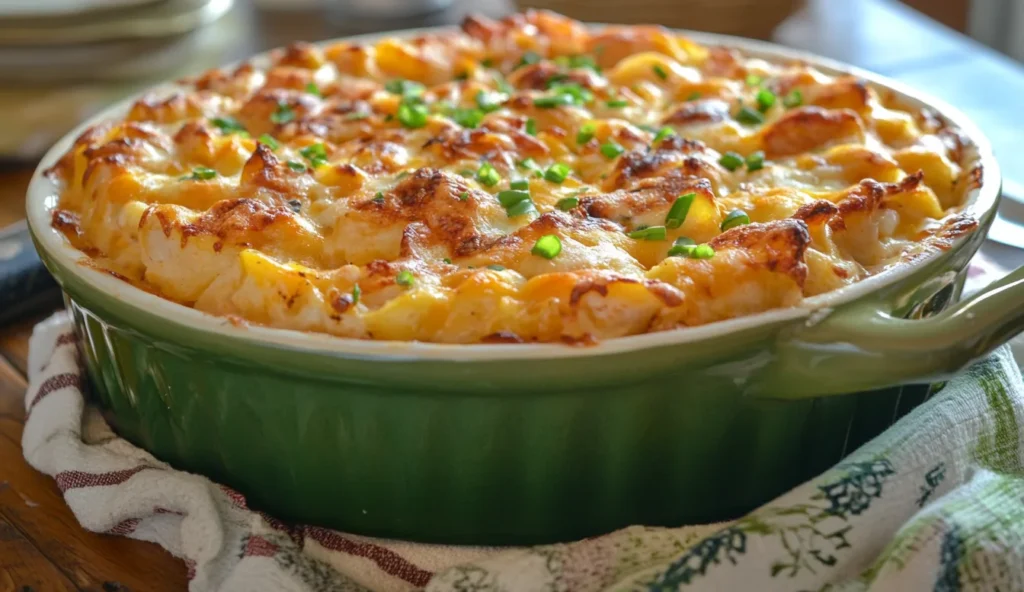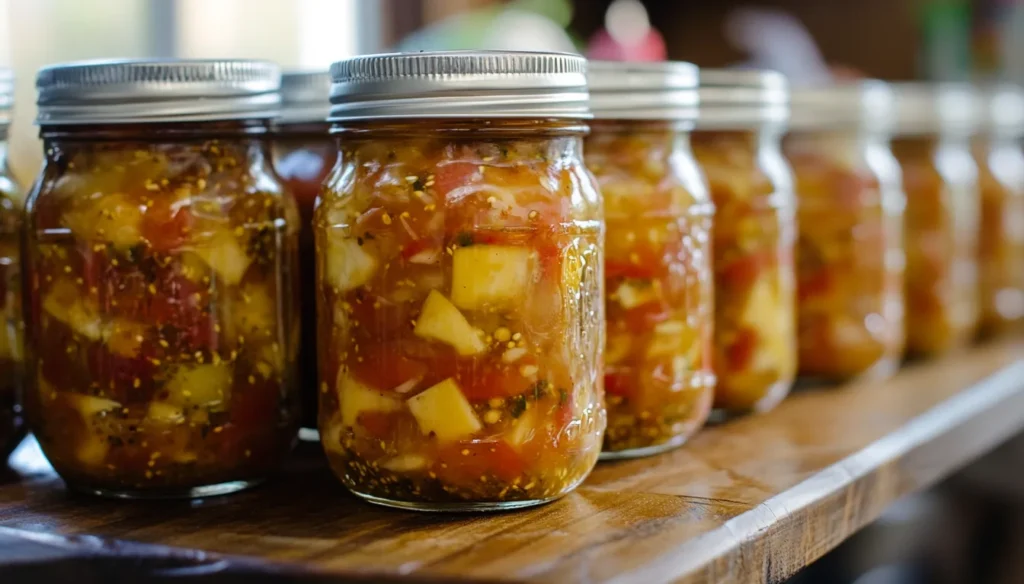The Historical and Etymological Origins of Potluck
The word “potluck” carries a rich historical and linguistic heritage, symbolizing communal sharing and the element of surprise. Rooted in medieval traditions, the term originally referred to an unplanned meal where a guest received whatever was available in the household pot—hence, “luck of the pot.”
Over time, this concept evolved into the modern practice of communal meals where participants contribute dishes, fostering a spirit of hospitality and shared abundance. The tradition reflects the social and economic realities of different eras, adapting to cultural shifts while maintaining its core essence of generosity and unpredictability.
Early Usage of the Word “Potluck” in Literature

The term “potluck” first appeared in English literature during the late 16th century. Notably, in 1592, Thomas Nashe used it in his work “Pierce Penilesse”, referring to the chance availability of a meal when visiting someone’s home. The phrase “luck of the pot” essentially meant guests would eat whatever was prepared, highlighting both hospitality and unpredictability.
This literary reference reflects societal norms of the time, where formal dining was rare, and sharing a humble meal was a gesture of goodwill. Potluck, therefore, became synonymous with openness and sharing, themes that remain integral to its meaning today.
The Cultural Origins of the Potluck Tradition
The potluck tradition spans multiple cultures, each adding its unique flavor to the concept. Indigenous communities in North America, for instance, practiced potlatches—a similar communal feast where people contributed resources to celebrate milestones or honor traditions. These events often included gifting and storytelling, reinforcing community ties.
Similarly, in Asian and African cultures, communal meals have long been a way to strengthen relationships. In many rural European societies, bringing a dish to a gathering was a sign of gratitude and camaraderie. These traditions collectively shaped the modern concept of potluck.
Potluck in Medieval Times: A Glimpse into Shared Meals
In medieval Europe, the potluck practice was less about convenience and more about survival. Meals often consisted of stews or soups that simmered over an open hearth, with ingredients contributed by various members of the household or community. Guests partaking in such meals literally depended on the “luck of the pot”, as there was no guarantee of what might be available.
This informal style of dining broke barriers of social hierarchy, as everyone shared the same food. Such practices laid the foundation for today’s potluck gatherings, where the emphasis is on participation rather than extravagance.
The Evolution of Potluck in English-Speaking Countries
As English-speaking nations expanded globally, the term potluck gained broader appeal. In colonial America, potlucks became a staple of rural life. Settlers, often isolated in small communities, relied on collective efforts to host meals during celebrations, harvests, and religious observances.
Over time, the potluck tradition adapted to urban environments, where busy schedules and limited resources made the idea of shared meals even more practical. This evolution demonstrates how the practice has remained relevant across centuries.
The Influence of Hospitality in Naming Potluck
The concept of hospitality has always been central to potluck. The name itself captures the spirit of welcoming guests, regardless of what is on the table. This inclusivity makes potluck gatherings timeless, embodying generosity over formality.
The term’s linguistic roots highlight the dual meanings of luck: one tied to fortune and the other to happenstance. Potluck thus represents both the unpredictability of shared meals and the certainty of togetherness.
Comparative Terms: How Other Cultures Refer to Shared Meals
Many cultures have their own version of potluck, with unique names and traditions. For instance:
- In Sweden, the kräftskiva (crayfish party) is a potluck-like event where guests bring dishes to celebrate the end of summer.
- In India, community feasts during festivals often involve guests contributing food, aligning with potluck principles.
- In Japan, mochi-making parties see participants bring ingredients to collectively prepare rice cakes.
These global variations demonstrate the universal appeal of sharing meals, transcending geographical and cultural boundaries.
Religious and Community Influences on the Potluck Tradition
Religious gatherings have played a significant role in popularizing potluck-style meals. Churches, mosques, and temples often host communal meals where attendees contribute dishes. In Christianity, potluck dinners are common during fellowship events, reinforcing the biblical principle of breaking bread together.
In rural communities, potlucks were often held to celebrate weddings, funerals, or seasonal milestones, emphasizing the communal aspect of such gatherings.
The Role of Serendipity in the Meaning of “Potluck”
Serendipity is a defining feature of potluck. The unpredictable nature of the dishes creates a sense of excitement and novelty, ensuring no two potluck gatherings are the same. This randomness also encourages creativity, as participants often bring unique or experimental dishes.
The luck in potluck is symbolic of the surprises and delights that emerge when diverse contributions come together, reflecting the richness of community life.
How the Term “Potluck” Was Adopted in Modern English
The transition of potluck from a literal description to a cultural phenomenon occurred during the 19th and 20th centuries. As industrialization brought people together in cities, potlucks became an efficient way to host gatherings without placing the burden solely on the host.
The term solidified its place in modern English, thanks to its adaptability and relevance. Today, it not only describes a shared meal but also symbolizes collaboration, resourcefulness, and inclusivity.
The Social and Cultural Significance of Potlucks

Potlucks as a Symbol of Community and Togetherness
Few traditions embody community and togetherness as perfectly as potlucks. These gatherings are more than just shared meals—they’re opportunities for individuals to connect, collaborate, and celebrate diversity. A potluck brings people together, each with their unique contributions, fostering a sense of belonging that transcends societal differences.
Potlucks are particularly popular in multicultural societies where participants bring dishes reflecting their heritage, turning the event into a vibrant culinary tapestry. This shared experience strengthens interpersonal bonds, making potlucks a symbol of unity.
Why Potlucks Became Popular in Modern Society
In the fast-paced modern world, potlucks have gained traction as a practical and economical way to host gatherings. Unlike catered or fully hosted meals, potlucks distribute responsibility among participants, making events more inclusive and less stressful for any single individual.
Social media and online platforms have further propelled the popularity of potlucks, enabling easy coordination. Apps like Evite and WhatsApp make it simpler to organize who brings what, ensuring variety and minimizing duplication. This modern adaptability has cemented potlucks as a go-to format for celebrations, workplace events, and community activities.
The Role of Potlucks in Strengthening Relationships
The act of preparing and sharing a dish for a potluck is inherently personal. Participants often bring their favorite recipes or family heirloom dishes, sparking conversations and deepening connections. These meals encourage storytelling—where a casserole or dessert can serve as a gateway to anecdotes about family traditions or childhood memories.
Moreover, potlucks allow for equal participation, fostering a sense of mutual respect. Everyone contributes something to the table, making the gathering a shared success and creating an atmosphere of trust and collaboration.
Shared Responsibility: What Potluck Represents in Group Dynamics
Potlucks are a testament to shared responsibility. In workplaces, schools, or social groups, organizing a potluck ensures that no single person is burdened with hosting duties. This collective approach reflects effective teamwork, as participants coordinate their efforts to achieve a common goal.
The tradition also highlights the value of individual contributions within a group. Whether someone brings a simple salad or an elaborate dessert, every dish matters. This egalitarian structure makes potlucks an excellent model for fostering cooperative dynamics.
Potlucks and Their Connection to Rural and Urban Communities
In rural communities, potlucks have long served as a cornerstone of social life. With limited resources and small populations, these gatherings were vital for maintaining social connections. Community centers, churches, and schools often hosted potlucks to mark important occasions.
Urban environments, despite their larger populations, face challenges like isolation and lack of community engagement. Potlucks provide a remedy by creating intimate spaces where neighbors and colleagues can interact. The adaptability of potlucks ensures they thrive in both rural and urban settings, bridging gaps and fostering unity.
The Economic Advantages of Potluck Meals
One of the most appealing aspects of potlucks is their cost-effectiveness. Hosting a meal can be expensive, but dividing the responsibility among participants significantly reduces financial strain. This makes potlucks ideal for families, schools, and community organizations with limited budgets.
Additionally, potlucks reduce food waste. Each participant brings only what is needed, and leftovers are often taken home, ensuring minimal wastage. This economical approach aligns with modern values of sustainability and resourcefulness.
Modern Interpretations of the Potluck Concept
The traditional potluck has evolved to include various modern interpretations. Today, potlucks can feature:
- Themed menus, such as international cuisines or seasonal dishes.
- Virtual potlucks, where participants cook and share recipes over video calls, especially popular during the pandemic.
- Dietary-specific potlucks, catering to vegan, gluten-free, or other dietary preferences.
These innovations keep the potluck tradition relevant, ensuring it remains a dynamic and inclusive form of social gathering.
How Potlucks Differ from Catered or Hosted Meals
Unlike catered events, which are often formal and rigid, potlucks are casual and spontaneous. The collaborative nature of potlucks makes them more relaxed, as the focus shifts from the host’s effort to the collective enjoyment of the group.
While hosted meals often highlight the culinary prowess of one individual, potlucks celebrate diversity. Each dish tells a different story, creating a shared experience that is far more interactive and engaging.
The Global Spread of Potluck Gatherings
The concept of potluck has transcended borders, finding a place in various cultural contexts. For example:
- In Australia, “bring a plate” events closely resemble potlucks.
- In the Philippines, communal gatherings known as “boodle fights” encourage shared meals where everyone contributes.
- In Latin American cultures, potluck-style events often feature shared barbecues or festive dishes.
The global appeal of potlucks lies in their adaptability, proving that the joy of shared meals is a universal experience.
Potlucks and Inclusivity: A Meal for Everyone
Potlucks epitomize inclusivity. Unlike formal dinners with fixed menus, potlucks allow participants to bring dishes that suit their tastes, dietary needs, or cultural preferences. This ensures that everyone has something to enjoy, making the gathering truly welcoming.
The egalitarian spirit of potlucks also breaks down barriers of status and hierarchy. Whether someone brings an intricate homemade dish or a store-bought snack, all contributions are valued equally. This inclusivity makes potlucks a cherished tradition across diverse communities.
Practical Aspects and Fun Facts About Potlucks

How to Host a Successful Potluck Gathering
Hosting a potluck gathering can be incredibly rewarding if done right. The key lies in planning and coordination. Here’s how to ensure your event is a hit:
- Set a Clear Theme: Whether it’s “comfort food,” “global cuisines,” or “holiday dishes,” a theme helps guests decide what to bring.
- Create a Sign-Up Sheet: Use tools like Google Sheets or Evite to let participants indicate their dish. This prevents duplicates and ensures a balanced spread of appetizers, mains, and desserts.
- Provide Essentials: As the host, offer non-food essentials like plates, cups, utensils, and beverages.
- Designate Space: Arrange your table or counter for easy access and grouping (e.g., a dessert corner or a salad section).
- Communicate Dietary Preferences: Encourage guests to label dishes with ingredients, especially for those with allergies or specific diets.
By creating an organized yet relaxed atmosphere, you can ensure that your potluck gathering is memorable and stress-free.
Common Etiquette Rules for Potluck Events
Etiquette plays a significant role in ensuring everyone enjoys the potluck experience. Here are the top rules to follow:
- Contribute Thoughtfully: Bring a dish that serves enough people, ideally something easy to share.
- Label Ingredients: Allergies and dietary restrictions are common, so transparency is crucial.
- Arrive On Time: The success of a potluck depends on everyone’s contribution, so avoid being late.
- Clean Up After Yourself: Whether it’s your serving dish or leftovers, don’t leave the host with extra work.
- Express Gratitude: Appreciate the host and others for their efforts, as potlucks thrive on collective goodwill.
Best Dishes to Bring to a Potluck
Choosing the perfect dish for a potluck can be tricky. Here are some crowd-pleasing options:
- Appetizers: Deviled eggs, bruschetta, or spring rolls.
- Main Courses: Lasagna, pulled pork sliders, or casseroles.
- Sides: Pasta salad, garlic bread, or roasted vegetables.
- Desserts: Brownies, cookies, or fruit tarts.
- Specialty Dishes: Bring a cultural favorite like biryani, dumplings, or tamales to add diversity.
When selecting a dish, consider portability, ease of serving, and how well it will hold up without reheating.
Cultural Variations in Potluck Food Choices
Potluck dishes often reflect the cultural background of the participants. Here’s a glimpse into how different cultures bring their flavor to these gatherings:
- Italy: Antipasto platters, risotto, or tiramisu.
- Mexico: Enchiladas, tamales, or tres leches cake.
- India: Samosas, curries, or gulab jamun.
- Japan: Sushi rolls, tempura, or green tea cakes.
- Middle East: Hummus, tabbouleh, or baklava.
These diverse contributions make potlucks not just meals but cultural explorations.
Unique Themes for Potluck Gatherings
Adding a theme to your potluck can elevate the experience. Consider these fun ideas:
- Breakfast for Dinner: Pancakes, omelets, and breakfast burritos.
- Farm-to-Table: Dishes made with locally sourced ingredients.
- International Feast: Guests bring dishes from their heritage.
- Color-Themed Potluck: Each dish corresponds to a chosen color.
- Decades Potluck: Foods inspired by specific time periods, like 1970s fondue.
A themed potluck sparks creativity and makes the event even more enjoyable.
Funny and Memorable Potluck Stories
Potluck gatherings are full of surprises, and sometimes, mishaps make the best stories:
- A guest once brought a bowl of plain rice, thinking it was a “simple food” theme, only to realize it was an elaborate gourmet potluck.
- At a Halloween potluck, someone mislabeled a dish as “spooky meatballs” without realizing they were vegetarian.
These moments, while unplanned, add humor and light-heartedness to the event.
How Technology Has Influenced Modern Potluck Planning
The rise of digital tools has revolutionized potluck planning. Apps and websites like SignUpGenius and PotluckHub make coordination seamless, allowing hosts to track contributions and send reminders.
Social media platforms also play a role. Facebook groups and WhatsApp chats are often used to discuss themes, share recipes, and even post event photos. Technology ensures that organizing a potluck is now as easy as sending a text.
Potluck Trivia: Unusual Dishes and Origins
Did you know some potluck dishes have unusual origins? For instance:
- Ambrosia Salad, a popular potluck dish in the U.S., originated in the late 19th century and was considered a luxurious treat.
- Jello Mold, another iconic dish, became a potluck staple during the 1950s due to its affordability and ease of preparation.
These quirky facts highlight the creativity that potlucks inspire.
The Environmental Benefits of Potluck Events
Potlucks are not just socially rewarding—they’re environmentally friendly too. Here’s how:
- Reduced Food Waste: Guests bring just enough, and leftovers are shared.
- Minimal Packaging: Homemade dishes often reduce single-use packaging.
- Shared Resources: Potlucks eliminate the need for excessive catering materials.
These green benefits align with the growing emphasis on sustainability in modern lifestyles.
Potlucks in Pop Culture: Movies, TV Shows, and More
Potlucks have made their mark in pop culture, often symbolizing community and humor. Some notable examples include:
- “The Office”: Several episodes feature potluck events that go hilariously awry.
- “Friendsgiving” Episodes: Thanksgiving-themed potlucks are a staple in sitcoms.
- Movies like “Julie & Julia”: Highlight the joy of shared meals and community cooking.
These portrayals underscore how potlucks resonate with audiences as a symbol of connection.
More FAQs About Potlucks
- What’s the origin of the word “potluck”?
- It dates back to the 16th century, meaning “the luck of the pot” or whatever food is available.
- Can potlucks work for large groups?
- Absolutely! The more participants, the greater the variety of dishes.
- What’s a good dish to bring if I don’t cook?
- Store-bought desserts, cheese platters, or fresh bread are excellent options.
- How do I keep my dish warm at a potluck?
- Use insulated containers or portable warming trays.
- What’s the best way to organize a potluck?
- Use digital sign-ups to ensure variety and avoid duplicates.
- Do potlucks have dietary options?
- Yes! Label dishes to accommodate allergies and preferences.
- What if I can’t decide what to bring?
- Ask the host for suggestions based on the menu gaps.
- Are potlucks environmentally friendly?
- Yes! They reduce food waste and encourage shared resources.
- Can potlucks be themed?
- Definitely! Themes like “comfort food” or “international cuisine” add excitement.
- What’s the funniest potluck mishap?
- A guest mistaking someone’s creative dessert for a side dish is always memorable!

